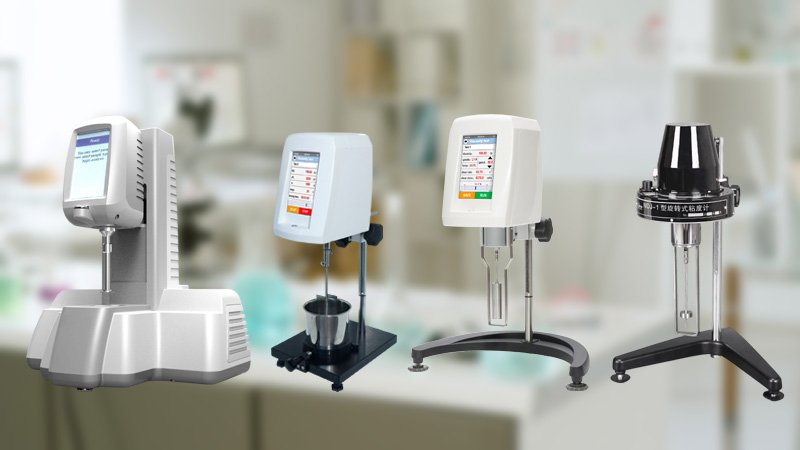Are you struggling to find the right viscosity measurement tool for your products? Choosing an inappropriate viscometer can lead to inaccurate results, wasted resources, and quality control issues.
A viscometer is an instrument that measures a fluid's resistance to flow (viscosity). The right type depends on your application, sample properties, accuracy requirements, budget, and testing environment. Various technologies offer different advantages for specific industries.
Through my years working with manufacturers across diverse industries, I've seen firsthand how the right viscometer choice can dramatically improve quality control processes and product consistency. Let's explore the options to find what works best for your specific needs.
Rotational Viscometers: How Do They Work and Who Benefits Most?
Many labs struggle with measuring thick fluids or need to test at different shear rates. Rotational viscometers solve these problems with their versatile design and measurement capabilities.
Rotational viscometers measure viscosity by determining the torque required to rotate a spindle at constant speed while immersed in the sample fluid. The resistance to this rotational motion correlates directly to the fluid's viscosity.
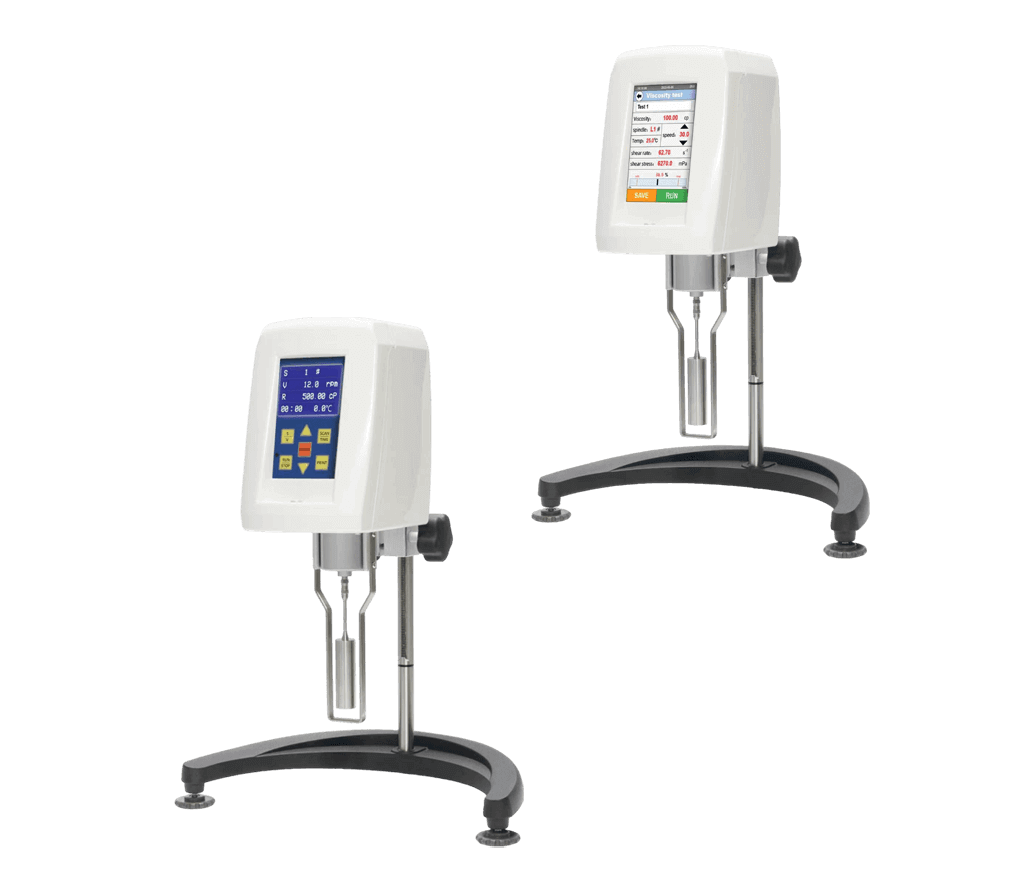
How It Works
Rotational viscometers operate on a simple yet powerful principle: they measure the torque needed to rotate a spindle in a fluid at a defined speed. I've implemented these systems for countless clients, and the process is straightforward:
- The sample is placed in a container or beaker
- A calibrated spindle is immersed in the fluid
- The spindle rotates at a set speed (RPM)
- The instrument measures the torque required to maintain that rotation
- Internal calculations convert torque measurements to viscosity values
Modern digital rotational viscometers display results instantly in various units (cP, mPa·s), with many offering data recording and computer interfacing capabilities. One feature I particularly value is the ability to perform measurements at different speeds, allowing for rheological profiling of non-Newtonian fluids.
Key Advantages
From my extensive work with manufacturers across industries, I've identified several compelling benefits that make rotational viscometers the most popular choice for many applications:
- Wide measurement range – from low viscosity fluids to highly viscous pastes
- Ability to measure non-Newtonian fluids and characterize flow behavior
- Option to test at multiple speeds and shear rates
- Simple operation and maintenance requirements
- Available in both manual and programmable models
- Suitable for quality control and R&D environments
- Adaptable with different spindle geometries for various applications
Many of my clients appreciate how one instrument can handle multiple product lines with just a change of spindles, making it a cost-effective solution for diverse manufacturing operations.
Applications
In my two decades working with viscosity measurement, I've seen rotational viscometers successfully deployed across numerous industries:
- Food processing: For sauces, dairy products, chocolate, and confectionery
- Cosmetics and personal care: Lotions, creams, shampoos, and toothpaste
- Pharmaceuticals: Syrups, suspensions, and ointments
- Paints and coatings: Architectural paints, industrial coatings, and primers
- Petroleum products: Oils, greases, and lubricants
- Adhesives: Glues, pastes, and construction adhesives
- Chemical processing: Raw materials and finished products quality control
I recently helped a medium-sized cosmetics manufacturer implement a digital rotational viscometer that allowed them to standardize their production process across multiple product lines, significantly reducing batch rejections.
Capillary Viscometers: When is This Traditional Method Your Best Option?
Labs requiring high precision and working with low-viscosity Newtonian fluids often face measurement challenges. Capillary viscometers provide a simple, accurate solution for these specific applications.
Capillary viscometers measure viscosity by timing how long it takes a fixed volume of fluid to flow through a precisely calibrated tube under gravity. The flow time correlates directly to kinematic viscosity.
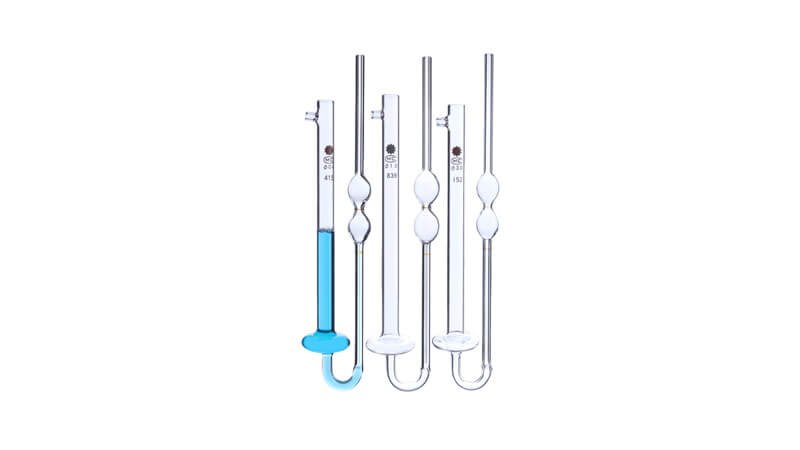
How It Works
Capillary viscometers operate using a straightforward principle based on Poiseuille's law. I've trained numerous lab technicians on these instruments, and the process follows these key steps:
- The glass viscometer is cleaned and dried thoroughly
- A precise amount of sample is loaded into the reservoir bulb
- The sample is drawn up through the capillary to above the upper timing mark
- The sample is allowed to flow down freely under gravity
- The time taken for the fluid meniscus to pass between two calibrated marks is measured
- This efflux time is multiplied by the viscometer constant to calculate kinematic viscosity
I find these instruments particularly valuable in settings requiring absolute precision, as they offer excellent repeatability when properly maintained and operated. Temperature control is critical, which is why most measurements are conducted in constant-temperature baths.
Key Advantages
Through my extensive work in metrology and calibration services, I've identified several compelling advantages that make capillary viscometers indispensable for certain applications:
- Exceptional accuracy and repeatability for Newtonian fluids
- No moving parts or electronics (in basic models) – highly reliable
- Recognized as a primary method for viscosity determination
- Reference standard for calibrating other viscometer types
- Low cost compared to many electronic instruments
- Long service life with proper care
- Compact and requires minimal lab space
- Available in standardized designs (Ubbelohde, Ostwald, Cannon-Fenske)
Many of my clients in standards laboratories and certification facilities rely exclusively on capillary viscometers for their reference measurements due to these compelling benefits.
Applications
In my consulting work across industries, I've seen capillary viscometers effectively utilized in these key areas:
- Petroleum testing: Lubricating oils, hydraulic fluids, and fuel standards
- Polymer solutions: For molecular weight determination and quality control
- Pharmaceuticals: Injectable solutions, syrups, and liquid medications
- Academic and research settings: For fundamental fluid behavior studies
- Calibration laboratories: As reference instruments for other viscometer types
- Chemical processing: Pure solvents and low-viscosity mixtures
- Food science: Clear liquids like syrups, juices, and flavor extracts
Last year, I helped a lubricant manufacturer implement a capillary viscometer testing program that helped them achieve ISO certification for their laboratory, significantly enhancing their market position.
Cone and Plate Viscometers: How Do They Achieve Superior Precision?
Research labs and quality control departments working with limited sample volumes often struggle to get reliable viscosity measurements. Cone and plate viscometers offer a specialized solution to this problem.
A cone and plate viscometer measures viscosity using a cone-shaped spindle rotating against a flat plate with a small sample between them. This creates a defined shear rate across the sample, enabling precise measurements with minimal fluid volumes.
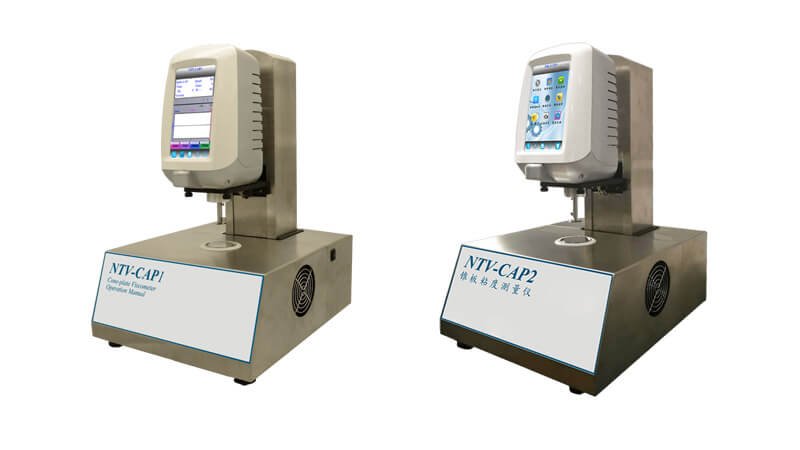
How It Works
Cone and plate viscometers operate on principles that allow for exceptionally precise control of test conditions. Through my work with pharmaceutical and cosmetic companies, I've become intimately familiar with their operation:
- A small sample (typically 0.5-2 mL) is placed on the flat plate
- The cone-shaped measuring element is lowered to a precise gap setting
- The cone rotates at a controlled speed, creating a uniform shear rate
- The torque required to maintain rotation is measured
- The instrument calculates viscosity based on the geometry, speed, and torque
What makes this design particularly valuable is the uniform shear rate created throughout the sample due to the increasing velocity with distance from the center, perfectly matched to the increasing gap height. This enables highly accurate rheological characterization even with minimal sample volumes.
Key Advantages
Based on my experience implementing viscosity testing protocols for various industries, cone and plate viscometers offer several distinct advantages:
- Requires extremely small sample volumes (often less than 1 mL)
- Provides precise control of shear rate and temperature
- Creates uniform shear conditions throughout the sample
- Excellent for characterizing non-Newtonian behavior
- High accuracy and repeatability
- Well-suited for high-shear testing applications
- Easy to clean between samples
- Suitable for both quality control and research applications
I've found these instruments particularly valuable for clients developing high-value formulations where sample conservation is critical, such as in pharmaceutical research or specialty chemical development.
Applications
In my consulting work, I've seen cone and plate viscometers successfully applied in numerous specialized fields:
- Pharmaceutical development: Drug formulations, injectables, and biologics
- Cosmetics research: New product development and formula optimization
- Food science: Specialty ingredients, flavorings, and thickeners
- Inks and specialty coatings: High-performance formulations
- Academic research: Rheological studies of complex fluids
- Biotechnology: Protein solutions and cell culture media
- Electronics: Conductive pastes, adhesives, and encapsulants
One of my clients in the semiconductor industry recently switched to a cone and plate system for testing their specialized thermal interface materials, allowing them to reduce sample size by 90% while improving measurement precision.
Falling Ball Viscometers: When is Simplicity Your Best Strategy?
For applications requiring field testing or where electronic instruments are impractical, finding a reliable viscosity measurement solution can be challenging. Falling ball viscometers offer an elegant, portable answer.
A falling ball viscometer measures viscosity by timing how long it takes a ball to fall through the fluid sample inside a tube. The ball's terminal velocity correlates to the fluid's viscosity according to Stokes' Law.
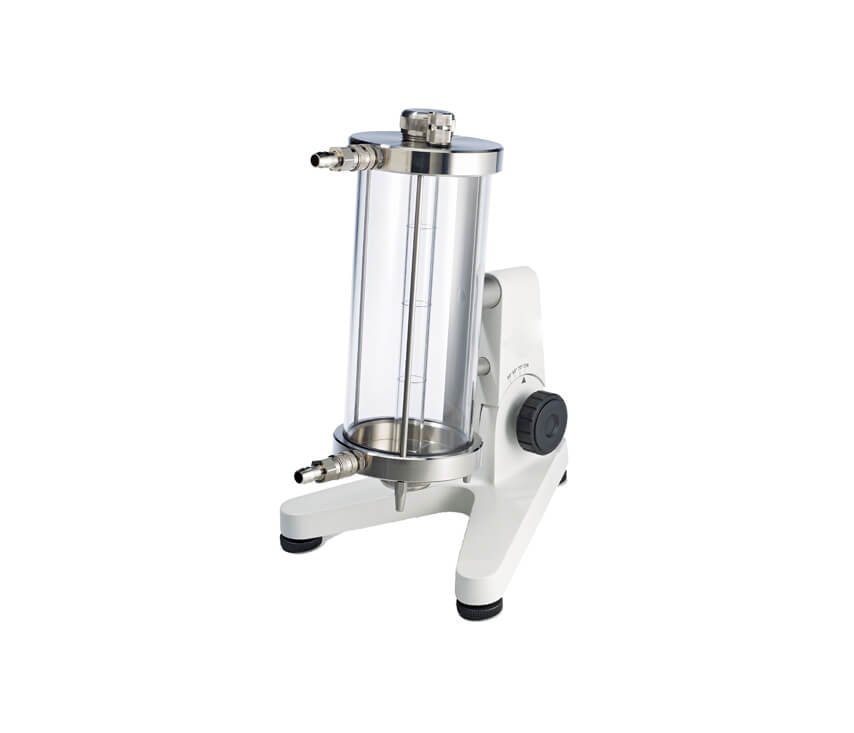
How It Works
Falling ball viscometers operate on a remarkably straightforward principle that I've found particularly valuable for field operations and teaching settings:
- A transparent tube is filled with the test fluid
- A calibrated ball (typically steel, glass, or tantalum) is introduced
- The tube is inverted to start the measurement
- The time taken for the ball to fall between two marked points is measured
- This time is multiplied by the instrument constant to calculate viscosity
In more sophisticated versions like the Höppler viscometer, the tube can be precisely angled and temperature-controlled for increased accuracy. I often recommend these instruments for operations where simplicity and reliability are paramount concerns.
Key Advantages
Through my work with diverse industries including petroleum and food processing, I've identified several key benefits that make falling ball viscometers uniquely valuable:
- Extremely simple operation with minimal training required
- No electronics or power required for basic models
- Portable and suitable for field testing applications
- Durable construction with few components to break or malfunction
- Wide viscosity measurement range by using different ball sizes/densities
- Low maintenance requirements
- Relatively low cost compared to electronic instruments
- Works well with transparent fluids of various viscosities
I've helped several clients implement these instruments in remote testing locations where reliability and ease of maintenance were critical considerations.
Applications
In my consulting practice, I've seen falling ball viscometers successfully deployed across several industries:
- Petroleum field operations: On-site testing of drilling fluids and lubricants
- Educational institutions: Teaching fluid dynamics and viscosity concepts
- Food processing: Quality checks for syrups, oils, and liquid ingredients
- Field research: Environmental sampling and testing
- Pharmaceutical manufacturing: Quality control of syrups and solutions
- Chemical processing: Quick checks of process fluids and intermediates
- Maintenance operations: Lubricant condition monitoring
Last year, I helped an olive oil producer implement a simple falling ball system for their production line quality checks, which dramatically improved their ability to maintain consistent product quality without requiring sophisticated laboratory facilities.
Vibrational Viscometers: How Does This Technology Deliver Continuous Monitoring?
Process engineers often struggle to monitor viscosity continuously in production environments. Traditional viscometers simply aren't designed for inline use, creating a significant measurement challenge.
Vibrational viscometers measure viscosity by detecting changes in the amplitude or frequency of a vibrating element immersed in the fluid. As viscosity increases, the damping effect on vibration increases proportionally.
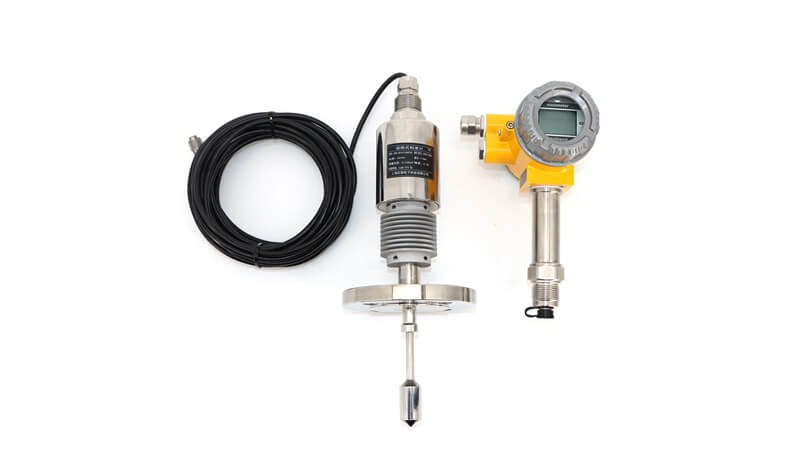
How It Works
Vibrational viscometers operate using resonance principles that make them uniquely suited for continuous monitoring. During my consulting for process automation systems, I've worked extensively with these instruments:
- A sensor probe containing a vibrating element (rod, fork, or plate) is immersed in the process fluid
- The element is driven to oscillate at its resonant frequency
- As the fluid's viscosity changes, the damping effect on the vibration changes
- The instrument measures changes in amplitude, frequency, or power required to maintain vibration
- These measurements are converted to viscosity values through calibration algorithms
What makes these instruments particularly valuable for production environments is their ability to provide continuous, real-time measurements without moving parts that can wear out or break. They can be installed directly into pipelines or tanks, providing immediate feedback on process conditions.
Key Advantages
Based on my experience implementing process control systems across industries, vibrational viscometers offer several distinct advantages:
- True inline/online continuous measurement capability
- No moving parts that can wear out or break
- Minimal maintenance requirements
- Suitable for harsh industrial environments
- Resistant to vibration and flow effects
- Capable of withstanding high pressures and temperatures
- Provides immediate response to viscosity changes
- Can be integrated with automated process control systems
For many of my clients managing continuous production processes, these instruments have become essential for maintaining consistent product quality and optimizing process efficiency.
Applications
Through my work with manufacturing operations, I've seen vibrational viscometers successfully implemented in numerous industrial settings:
- Oil refining: Monitoring process streams and blending operations
- Food production: Continuous monitoring of liquid food products
- Paper manufacturing: Pulp consistency and coating application
- Chemical processing: Reactor monitoring and product quality control
- Pharmaceutical manufacturing: Continuous production systems
- Paint and coatings: Production line quality control
- Brewing and beverage production: Process monitoring and blending control
One of my industrial clients recently implemented vibrational viscometers throughout their chemical processing facility, allowing them to reduce product variability by 35% and significantly decrease quality-related rejections.
Viscosity Cups: Why Do These Simple Tools Remain Industry Standards?
Quality control teams often need fast, reliable viscosity checks without investing in complex equipment. Viscosity cups provide an efficient solution for quick measurements in production environments.
Viscosity cups are simple devices with a precisely sized orifice at the bottom. The time it takes for the fluid to flow through this opening correlates to its viscosity, providing quick quality control checks.

How It Works
Viscosity cups operate on an elegantly simple principle that I've found invaluable for production floor quality control:
- The cup is completely submerged in the sample fluid
- It is lifted vertically, allowing the cup to fill completely
- As the cup clears the surface, timing begins
- The time is noted when the fluid stream first breaks
- This efflux time is compared to standards or converted to centistokes
- Results are interpreted based on established specifications
Different cup designs (Zahn, Ford, ISO, DIN) have specific orifice sizes and dimensions, making them suitable for different viscosity ranges and applications. I typically recommend keeping multiple cup types available to cover the full range of products being tested.
Key Advantages
Through my work implementing quality control systems for coating and paint manufacturers, I've identified several compelling advantages of viscosity cups:
- Extremely low cost compared to electronic instruments
- No power or batteries required
- Highly portable and durable
- Minimal training needed for operators
- Quick results in production environments
- Easy to clean and maintain
- Suitable for field testing applications
- Industry-standard method for many applications
I often recommend these instruments as complementary tools even when more sophisticated viscometers are available, as they provide immediate feedback during production and are nearly foolproof in operation.
Applications
In my consulting practice, I've seen viscosity cups effectively used across numerous industries:
- Paint manufacturing: Quick checks during production and adjustment
- Coating processes: Quality control before application
- Printing inks: Consistency verification before press runs
- Adhesive production: Batch quality verification
- Textile treatments: Process control for sizing and finishing
- Wood finishes: Production and application quality control
- Field service operations: On-site verification of product consistency
Last month, I helped a printing ink manufacturer develop a simple but effective quality control protocol using standardized viscosity cups, which helped them reduce color matching issues by ensuring consistent application properties.
Krebs Stormer Viscometers: What Makes Them Essential for Paint Testing?
Paint manufacturers face unique challenges when measuring the thick, non-Newtonian fluids used in their products. Standard viscometers often fail to provide relevant data for application performance, but Krebs Stormer viscometers solve this industry-specific problem.
Krebs Stormer viscometers measure viscosity by determining the torque required to rotate a paddle at 200 RPM through the sample. Results are expressed in Krebs Units (KU), providing standardized measurements specifically relevant to paint application properties.

How It Works
Krebs Stormer viscometers operate with a specialized design optimized for paint and coating evaluation. In my work with coating manufacturers, I've found their operation straightforward but highly effective:
- The paint sample is placed in a standardized container
- The paddle-type spindle is lowered into the sample at a specific depth
- The motor drives the spindle at exactly 200 RPM
- The instrument measures the torque required to maintain this rotation speed
- Results are displayed directly in Krebs Units (KU), a scale specifically developed for paint assessment
The beauty of this method is its direct correlation to paint application properties. The paddle shape and rotational speed were specifically designed to mimic the forces experienced during brush or roller application, making the measurements particularly relevant to real-world performance.
Key Advantages
Through my extensive work with paint manufacturers and coating developers, I've identified several unique benefits that make Krebs Stormer viscometers indispensable for this industry:
- Results correlate directly to application characteristics (brushability, rollability)
- Industry-standard measurement method accepted by paint manufacturers worldwide
- Simple operation with minimal training required
- Standardized test method documented in ASTM D562
- Specialized for medium to high viscosity materials
- Provides consistent comparative data between different paint formulations
- Results expressed in familiar industry units (KU)
- Robust design suited for production environments
Many of my clients in the coatings industry maintain Krebs viscometers alongside other viscosity measurement systems, recognizing their unique value for application-specific testing.
Applications
In my consulting work, I've seen Krebs Stormer viscometers used primarily in these areas:
- Architectural paint manufacturing: Quality control for consumer paints
- Industrial coating development: Formulation optimization
- Raw material evaluation: Testing thickeners and additives
- Research and development: New coating formulation
- Production monitoring: In-process quality checks
- Competitive product analysis: Benchmarking against market standards
- Contractor and professional paint lines: Performance specification
I recently helped a regional paint manufacturer implement a comprehensive quality control protocol centered around Krebs viscosity measurement, which significantly improved their batch-to-batch consistency and reduced customer complaints about application issues.
Other Viscometers: Which Specialized Instruments Might Solve Your Unique Challenges?
Some industries face unique viscosity measurement challenges that standard instruments can't address. Specialized viscometers designed for specific applications provide targeted solutions for these niche requirements.
Beyond the common types, specialized viscometers include bubble viscometers for gases, electromagnetically spinning sphere viscometers for micro-samples, and rheometers for advanced materials characterization. These instruments serve specific applications requiring unique measurement approaches.
Rheometers
For advanced materials characterization beyond simple viscosity measurement, rheometers provide comprehensive analysis capabilities:
- Measure both viscous and elastic properties of complex materials
- Can operate in oscillatory and rotational modes
- Determine yield stress, thixotropy, and viscoelastic parameters
- Available with sophisticated temperature and atmosphere control
- Essential for R&D applications and formulation development
- Provide detailed flow curves and material structure information
- Capable of measuring extremely low torques for sensitive samples
While more complex and expensive than standard viscometers, I often recommend rheometers to clients developing sophisticated formulations where complete material characterization is essential.
Bubble Viscometers
For the specialized field of gas viscosity measurement, bubble viscometers offer a simple but effective approach:
- Measure gas viscosity by timing bubble movement through a calibrated tube
- Compact and portable design suitable for field use
- No power requirements for manual models
- Particularly useful for natural gas quality assessment
- Provides quick comparative measurements
- Simple operation with minimal training required
I've helped several natural gas processing facilities implement these specialized instruments for quality monitoring and process control applications.
Electromagnetically Spinning Sphere Viscometers
For ultra-small sample volumes or highly precise measurements, these specialized instruments offer unique capabilities:
- Measure viscosity using a magnetically suspended and rotated sphere
- Require extremely small sample volumes (as little as 100 microliters)
- Minimal contact with sample (only the sphere touches the fluid)
- Wide viscosity and temperature measurement ranges
- Particularly valuable for biological samples and precious materials
- High accuracy and reproducibility
These specialized instruments serve niche applications where sample conservation is paramount, such as biological research and development of high-value specialty chemicals.
Making the Right Choice: How to Select the Perfect Viscometer for Your Application?
Selecting the wrong viscometer can waste resources and yield misleading results. With so many options available, how do you choose the right instrument for your specific needs?
Choosing the right viscometer depends on several factors: sample viscosity range, required accuracy, sample volume, operating environment, budget constraints, and compliance requirements. Matching these parameters to the appropriate technology ensures optimal measurement results.
Key Selection Factors
In my consulting practice, I guide clients through a systematic selection process based on these critical factors:
- Viscosity range: Different instruments have specific measurement ranges - match your expected sample viscosity to appropriate technology
- Sample characteristics: Consider whether your fluid is Newtonian or non-Newtonian, transparent or opaque, homogeneous or heterogeneous
- Accuracy requirements: Higher precision generally comes with higher cost - determine what level of accuracy your application truly requires
- Sample volume: If sample conservation is important, choose technologies that require minimal volumes
- Temperature control: Some applications require precise temperature regulation during measurement
- Test environment: Laboratory, production floor, or field use will dictate durability and portability needs
- Operator skill level: Some instruments require extensive training while others can be used with minimal instruction
- Automation needs: Consider whether manual operation is sufficient or if automated testing is required
- Industry standards: Many industries have specific test methods requiring particular viscometer types
- Budget constraints: Balance acquisition cost against features, precision, and long-term value
By methodically working through these considerations, I help clients avoid costly mistakes and ensure they invest in instruments that truly meet their needs.
Industry-Specific Recommendations
Based on my experience across multiple sectors, I can offer these general guidelines:
- Food and beverage: Rotational viscometers for most products; capillary for thin liquids; special attention to sanitary requirements
- Pharmaceuticals: Cone and plate for limited samples; rotational for general QC; capillary for reference testing
- Paints and coatings: Krebs Stormer for application properties; rotational for detailed characterization; viscosity cups for production
- Petroleum: Capillary for standardized testing; rotational or Stabinger for rapid analysis
- Chemicals: Rotational for general use; vibrational for in-line monitoring; rheometers for advanced characterization
- Personal care products: Cone and plate or small sample adapters for expensive formulations; rotational for production
- Adhesives: Rotational with specialized spindles for high viscosity; rheometers for complete characterization
I tailor these recommendations to each client's specific circumstances, considering their unique challenges and objectives.
Conclusion
Selecting the right viscometer is crucial for accurate viscosity measurement and product quality control. By understanding each technology's strengths and limitations, you can choose a solution that delivers reliable results for your specific applications, ultimately improving your products and processes.

